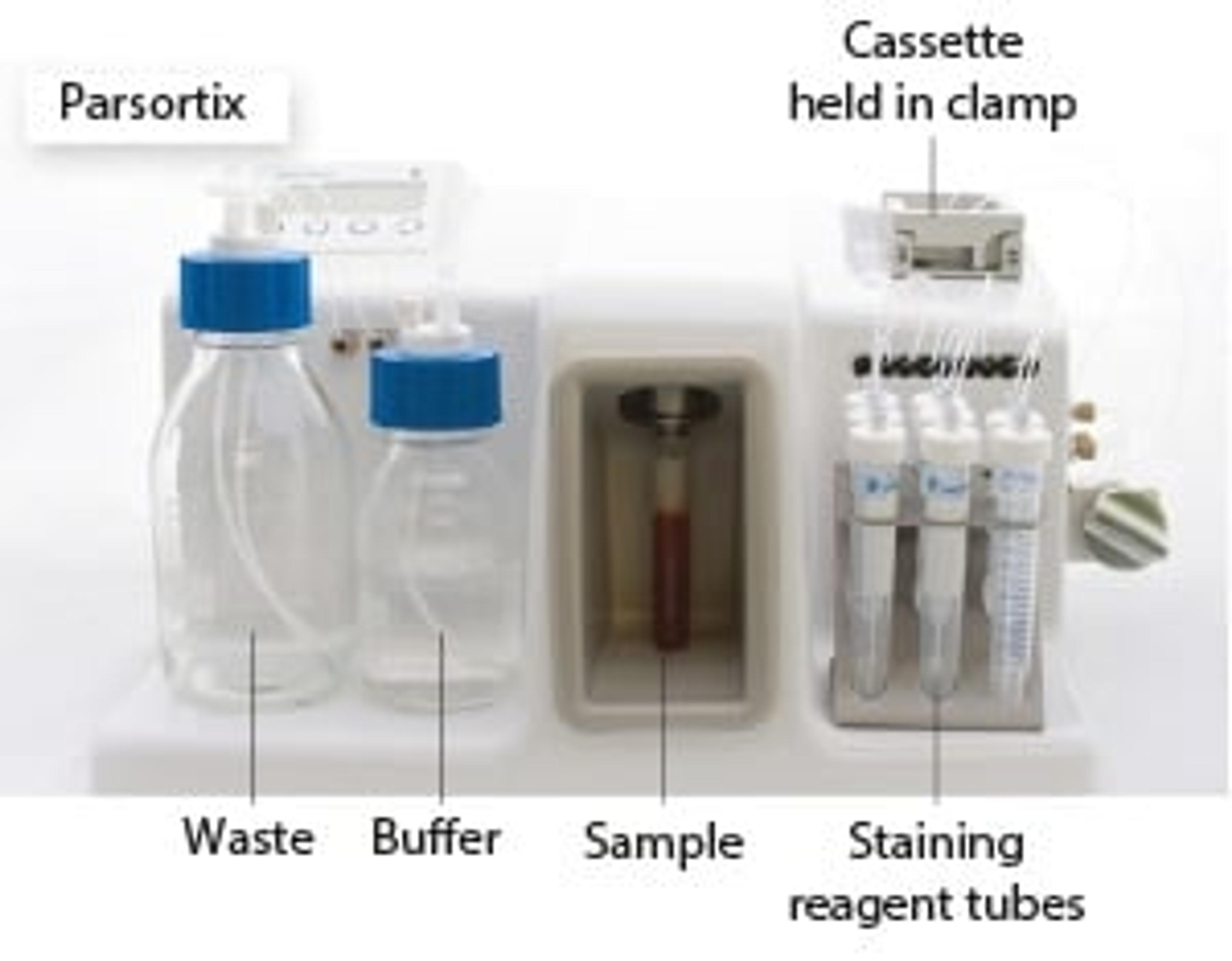Early Detection of Ovarian Cancer: Medical University of Vienna Demonstrates ANGLE’s ‘Blood Biopsy’ Technology
Capture and analyze mRNA of circulating tumor cells for ovarian and breast cancer diagnosis
26 Apr 2015

The research team at the Medical University of Vienna uses several Parsortix™ systems Researchers from the Medical University of Vienna presented a scientific poster at the American Association of Cancer Research Annual meeting, detailing a protocol combining the novel microfluidic Parsortix™ technology with qPCR, to enable the molecular analysis of circulating tumor cells (CTCs) implicated in ovarian and breast cancer. The Parsortix system is currently research use only, and not for use as an in vitro diagnostic. The new technique will allow the implementation of ‘liquid biopsies’ in cancer detection studies and as a companion diagnostic in clinical trials. Prof. Robert Zeillinger, Head of the Molecular Oncology Group, Medical University of Vienna, met Kerry Parker of SelectScience.
Early Detection of Ovarian Cancer
In their research using this approach, Prof. Robert Zeillinger and Dr. Eva Obermayr, Principal Investigator, achieved significantly higher ovarian cancer detection rates (80 percent and 78 percent, versus 24 percent for other CTC approaches) when screening against a proprietary 7-gene panel. For the detection of breast cancer, the researchers also demonstrated an improved detection rate – finding as high as 71 percent mRNA-positive patients versus 40 percent for the standard CTC diagnostic approach, which relies on the expression of epithelial markers.
By combining the Parsortix technology with qPCR analysis, we achieved an unprecedented high detection rate of cancer, even in early stage patients, when conventional diagnostic methods failed
Prof. Robert Zeillinger Medical University of Vienna

Prof. Robert Zeillinger leads the team at the Medical University of Vienna
Subsequently, the system was optimized with the addition of a further 23 RNA markers. In the initial subset of study samples so far analyzed, this approach identified an increased level of 92% across all the cancer types, with 100% of the ovarian cancer patients correctly identified while maintaining 100% specificity. Larger sample sizes will be needed to confirm these optimized results. How does the Parsortix™ system work?
The system from ANGLE uses a patented micro-fluidic technology in the form of a disposable cassette to capture and then harvest circulating tumor cells (CTCs) from blood. The cassette captures CTCs based on their less deformable nature and larger size compared to other blood components. The disposable cassette is placed in a clamp, and the Parsortix system then automatically processes the patient sample. Parsortix System CTCs are caught on a step that criss-crosses the microscope slide sized cassette. Read more here.
“The Parsortix technology contributes to the unprecedented specificity of the overall approach, by providing a high purity CTC sample. Parsortix is a label-free technology, and as such may become the gold standard for ovarian cancer diagnosis,” said Obermayr. “By combining the Parsortix technology with qPCR analysis, we achieved an unprecedented high detection rate of cancer, even in early stage patients, when conventional diagnostic methods failed.”
"We already have five Parsortix systems with more to come... without this technology our research would still be where it was three years ago", concluded Zeillinger.
New Multi-Center Clinical Study
The Medical University of Vienna is now progressing into a multi-center prospective clinical study in ovarian cancer, which is expected to take around 18 months to complete. ANGLE is supporting this effort as a top priority. The Parsortix system, together with the RNA marker panel, has the potential to help inform clinical decision-making for ovarian cancer patients in:
- Detection of cancer in high risk or genetically pre-disposed patients (detection)
- Monitoring therapy and selection of therapies in treatment of ovarian cancer patients (therapy monitoring)
- Monitoring of ovarian cancer patients in remission for early detection of relapse (remission monitoring)
Commercial Ovarian Cancer Test
Following the early results of the ovarian cancer research from the Medical University of Vienna, ANGLE plc raised £8.8 million ($13.1 million USD) to drive the commercialization of an ovarian cancer diagnostic on the Parsortix platform.
We already have five Parsortix systems with more to come... without this technology our research would still be where it was three years ago
Prof. Robert Zeillinger Medical University of Vienna
“The prospect of a simple blood test for cancer with high sensitivity and specificity is unheard of in the medical field,” said ANGLE Founder and Chief Executive, Andrew Newland. “The very strong substantiation of the Parsortix system coming so soon after our fundraising is very welcome. We continue to focus all our efforts to get this system into the market to the benefit of patients.”
The technology is broadly applicable across all forms of solid tumor cancer – as well as other diseases – that require the capture and isolation of specific cells from a blood sample to aid in analysis for diagnosis.
“It is now clear that the Parsortix system has wide application not just in ovarian cancer but in breast cancer and other gynecological cancers as well,” noted Zeillinger. “We are delighted to be working with ANGLE to bring this new capability to our patients as soon as possible.”
Download the scientific poster Circulating rare cells enable highly efficient cancer detection.

